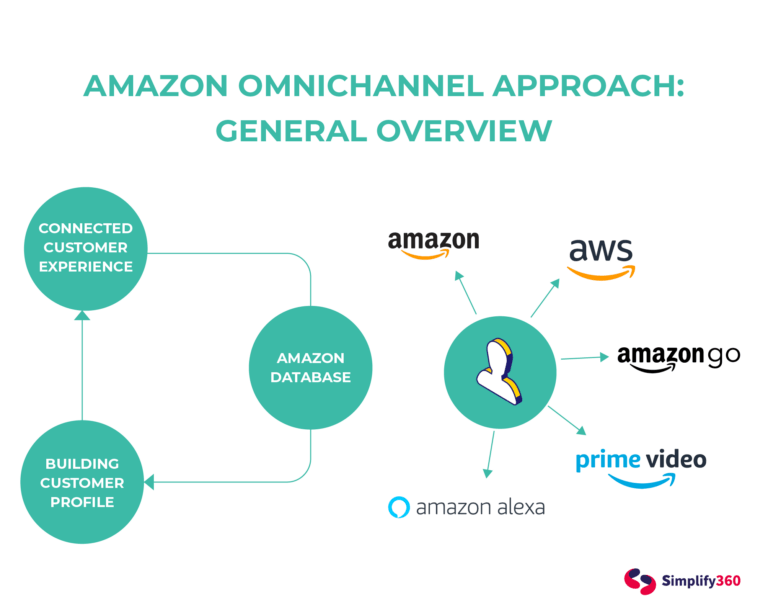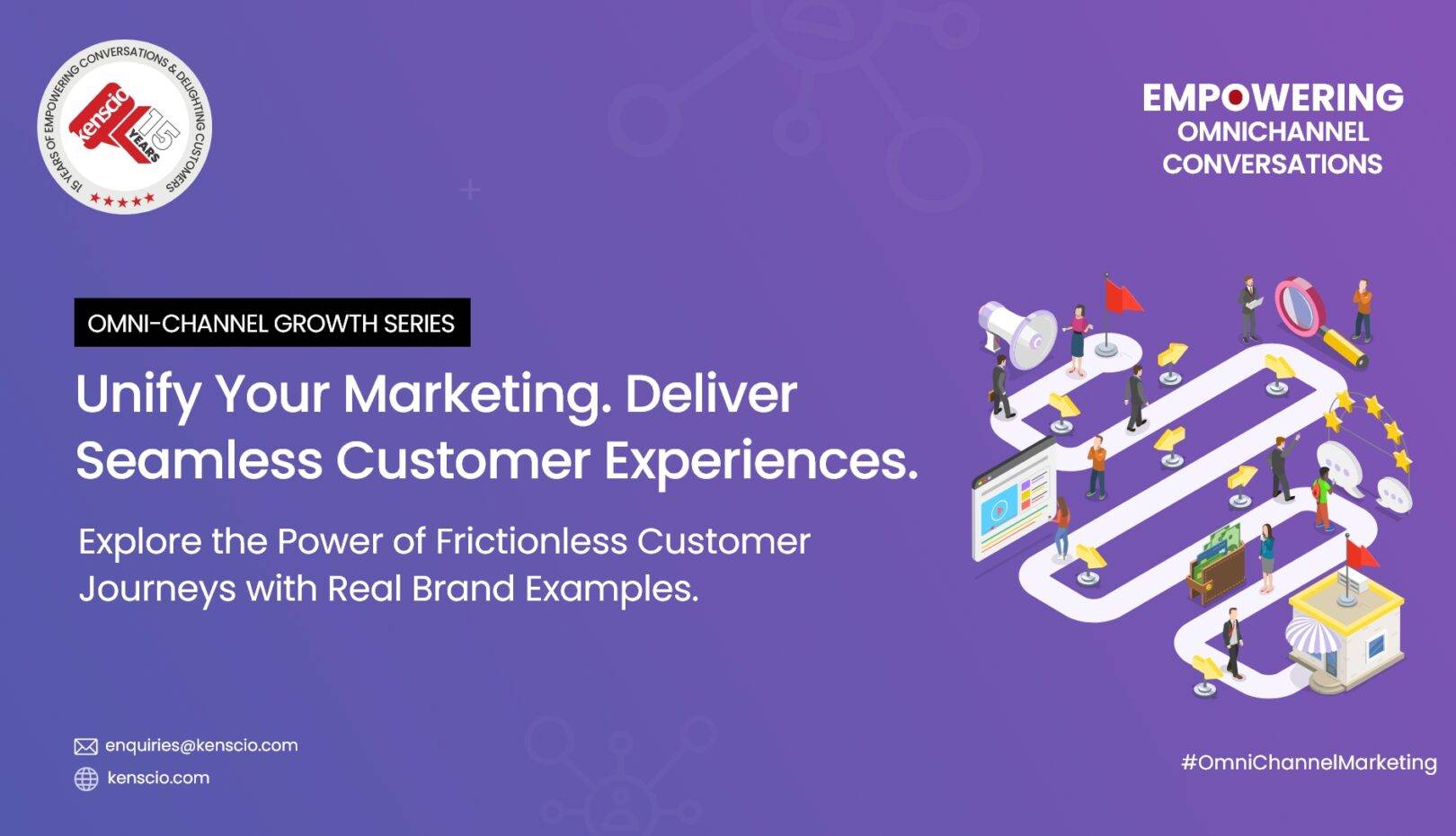- May 8, 2025
- by Parbeshkumar Maurya
Explore Frictionless Customer Journeys with Real-World Omni-Channel Marketing Examples | Omni-Channel Growth Series Blog 1
Imagine this scenario: A customer searches for a product on your website but leaves without purchasing. Later, they see an ad for the same product on Instagram, then receive an email with a discount offer. Finally, they visit your store, where the staff already knows their preferences, and they complete the purchase.
To the customer, this process feels seamless—as if every interaction was designed just for them.
This is the essence of Omni-Channel marketing strategy where businesses integrate all customer touchpoints into one cohesive experience. It eliminates friction, allowing customers to move effortlessly between devices and platforms while maintaining personalized interactions.
Why does this matter?
- 73% of consumers use multiple channels in their shopping journey
- Businesses with strong Omni-Channel strategies see a 9.5% increase in annual revenue
- 89% of customers remain loyal to brands that offer consistent experiences across all touchpoints
Many businesses, however, fail to integrate their marketing channels, leading to disconnected experiences that frustrate customers and drive them away. The solution? An effective Omni-Channel marketing strategy that unifies every customer interaction.
What is Omni-Channel Marketing?
Omni-Channel marketing is about seamless brand interactions across multiple channels—email, SMS, social media, mobile apps, websites, and in-store. Unlike traditional multi-channel marketing, where each platform operates separately, Omni-Channel marketing integrates all platforms into a single, connected ecosystem.
Multi-Channel vs. Omni-Channel: Understanding the Difference
Multi-Channel Marketing:
❌ Disconnected interactions across different platforms.
❌ Customers receive different messaging and inconsistent offers depending on the channel.
❌ Example: A customer sees a discount on social media but finds it doesn’t apply in-store.
Omni-Channel Marketing:
✅ All channels work together, ensuring a consistent experience.
✅ Customers can seamlessly switch between channels without losing progress.
✅ Example: A customer adds a product to their cart on desktop, gets a push notification reminder, then receives in-store assistance, with loyalty points updating in real-time.
Explore Omni-Channel marketing’s Frictionless Customer Journeys with Real Brand Examples:
Amazon’s Omni-Channel Excellence
Amazon exemplifies a seamless Omni-Channel customer journey by integrating multiple touchpoints to enhance the shopping experience. Here’s how:
- Cross-Device Cart Synchronization: A customer adds an item to their cart on a desktop device. Later, they can view and purchase the same item on their mobile device without re-adding it, thanks to synchronized shopping carts across devices.
- Personalized Email Recommendations: Amazon sends tailored emails based on the customer’s browsing and purchase history, suggesting products they are likely to be interested in. This personalization is achieved through behavioral targeting and dynamic content strategies .
- Real-Time Order Updates via SMS: After a purchase, customers receive SMS notifications providing real-time updates on their order status, enhancing transparency and trust.
- Voice-Activated Shopping with Alexa: Customers can use Amazon Alexa to add items to their shopping lists or place orders, integrating voice technology into the shopping experience.
Result: These integrated strategies lead to increased conversions, higher customer retention, and a frictionless shopping experience that keeps customers engaged and satisfied.

The Impact of Omni-Channel Marketing: Why It Works
1️ Boosts Customer Retention and Brand Loyalty
Customers are more likely to return to brands that recognize them and offer personalized experiences.
Fact: 89% of brands with strong Omni-Channel engagement retain customers (Invesp).
Example: Sephora’s Beauty Insider Program
✔ Customers earn loyalty points across online and in-store purchases.
✔ The mobile app provides AI-driven beauty recommendations based on purchase history.
✔ Offers and promotions remain consistent across email, social, and the app.
Result: Higher engagement, increased repeat purchases, and stronger brand loyalty.
2. Increases Revenue and Conversions
An effective Omni-Channel strategy ensures that customers stay engaged, ultimately driving more sales.
Fact: Omni-Channel shoppers have a 30% higher lifetime value than single-channel shoppers (Google) .
Example: Nike’s Omni-Channel Integration
🔹 Customers can buy online and pick up in-store.
🔹 Nike’s app offers personalized discounts based on browsing history.
🔹 Customer preferences sync across platforms, allowing tailored product suggestions.
3 Removes Friction in the Customer Journey
Consumers dislike having to re-enter details or restart a purchase on a new device. Omni-Channel marketing eliminates these barriers.
Example: Starbucks’ Mobile App & In-Store Sync
✔ Customers order ahead using the Starbucks app, reducing wait times.
✔ Their payment, order history, and rewards sync across all devices.
✔ In-store purchases instantly update their loyalty points and rewards.
Result: Shorter wait times, higher convenience, and increased customer satisfaction.
4. Drives Results for D2C Brands Too
Omni-Channel isn’t just for global giants—it empowers fast-growing D2C brands to scale smarter.
Example: Country Bean’s Omni-Channel Growth with Growlytics
With the help of Growlytics Journeys, they created personalized automation flows based on user behavior—re-engaging customers through email, push, and in-app messages tailored to each step of the funnel.
Result:
- 40% increase in purchase orders within 6 months
- App conversions grew from 35% to 75%
- Increased retention through behavior-based segmentation and smart retargeting
Conclusion: The Future of Marketing is Omni-Channel
Omni-Channel marketing is no longer optional—it’s essential. Customers expect a seamless journey, and businesses that fail to provide it will struggle to retain engagement.
✅ Integrate customer data across platforms for real-time personalization.
✅ Ensure brand consistency across all channels.
✅ Leverage AI and automation to deliver hyper-personalized experiences.
Ready to Unify Customer Journeys with Kenscio?
What’s Next? Mastering Omni-Channel Strategy
Sources:
- Harvard Business Review: Omni-Channel Retail Study
- Invesp: Omni-Channel Customer Retention Report
- Google Omni-Channel Report: Consumer Insights
- Amazon’s Omnichannel User Experience: A Case Study
- Sephora’s Omnichannel Approach to Enhance Customer Loyalty
- The future of retail is omnichannel—and Nike is nailing it
- Country Bean Increases Purchase Orders by 40% with Growlytics
